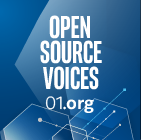Optimal Match-Making: Kubernetes Node Feature Discovery Project
In the world of Kubernetes, not all nodes are created equal. Likewise, not all workloads are alike. So, how do you optimally match the right workloads to the nodes with the appropriate hardware and software capabilities for these workloads? This is the problem that Markus Lehtonen, Software Engineer at Intel, sought to solve as he engaged with the Kubernetes SIG Node’s Node Feature Discovery (NFD) sub-project. From the Finnish farmland to the Kubernetes landscape, Markus shares his experiences in growing this community and provides a glimpse into an exciting new release that’s just around the corner.
Read on to learn more about this sub-project, and get the scoop on Intel in Kubernetes at 01.org/Kubernetes!
Tell us a little bit about yourself and what drives you.
I grew up in the countryside on a farm and, in addition to the technical and theoretical work in my daily work, I like the physical work and activities of living on a farm. One important thing for me is the balance between work and family life and personal hobbies. In the scope of my work, the interaction with colleagues across Intel and peers from around the world is thrilling to me — learning from them and from all the projects linked to the ecosystem really energizes me.
What led you into the world of open source, and more specifically, Kubernetes?
I have a background in Electrical Engineering, but I ended up at Nokia ten years ago, which led me into open source with the Meego project, with Linux-based mobile phones. After a few years, I joined Intel and have worked in many projects, including Linux-based distros like Tizen and the Yocto Project. From there, I started working in Kubernetes. I have a strong background in Linux and embedded systems, but the cloud space is new to me, which is both fun and challenging because the mindset is so different.
What are you currently working on in Kubernetes?
When we started to work on Kubernetes, we had a few areas where we wanted to focus, and I chose the Node Feature Discovery project within the Kubernetes SIG Node. It was a smaller sub-project but was a great kick start into the Kubernetes world — it provided a discrete scope that was easy to understand, which made it easy to get started with, begin contributing and take a significant role in the project.
What is the aim of the Kubernetes Node Feature Discovery sub-project? What is it trying to achieve?
A Kubernetes cluster is comprised of multiple worker nodes that run workloads. Clusters may be heterogeneous so that each node has different capabilities; some nodes are better at doing specific jobs than others. Likewise, not all workloads are alike; they have different requirements, and benefit from different features and capabilities. This sub-project, sponsored by SIG Node and initially started by Intel, is focused on enhancing resource utilization. Node Feature Discovery (NFD) advertises each node’s hardware and software capabilities, allowing users to locate & optimally match workloads to the appropriate nodes with the hardware (and/or software) capabilities needed to support these specific workloads. Subsequently, users can take advantage of the capabilities within the underlying hardware, resulting in faster processing, for example. Ultimately, users derive the greatest value from their hardware investment.
When you think about your work in this SIG, what are some of your proudest accomplishments?
When I started in this SIG, the group of people working on Node Feature Discovery (NFD) was smaller. By being welcoming and responsive to newcomers, and talking about the project at meetups, we’ve been able to grow it considerably. We’ve been collaborating with Red Hat who is integrating NFD into their OpenStack offering — they have been active in the project. We’ve also been working with nVidia and ARM. I also feel proud of making contributions to the project that others have acknowledged and used themselves.
Looking forward, give us a sneak peek into what’s next.
There’s a new release just around the corner, which is focused on making Node Feature Discovery (NFD) more flexible and customizable, more user-friendly in terms of the interface & documentation, and more secure. It’s exciting to feel like we’re reaching the beta stage, and moving from incubator to SIG status. In the future, we hope to expand the scope of NFD to include extended resources — and possibly, custom resources — in Kubernetes. We’re also looking at enhancing testing and documentation. With the new server-client architecture and customizability in the upcoming release, I feel that NFD could become a more central piece in customer-specific node labeling.
What are you looking forward to at KubeCon Barcelona?
I’ve attended local meetups but I’ve never been to a global KubeCon — this will be my first. I’m looking forward to meeting people face-to-face, especially those in SIG Node, so that we can talk about our ideas. I’m also looking forward to all the great cuisine in Barcelona!
by Nicole Huesman
Community & Developer Advocate
